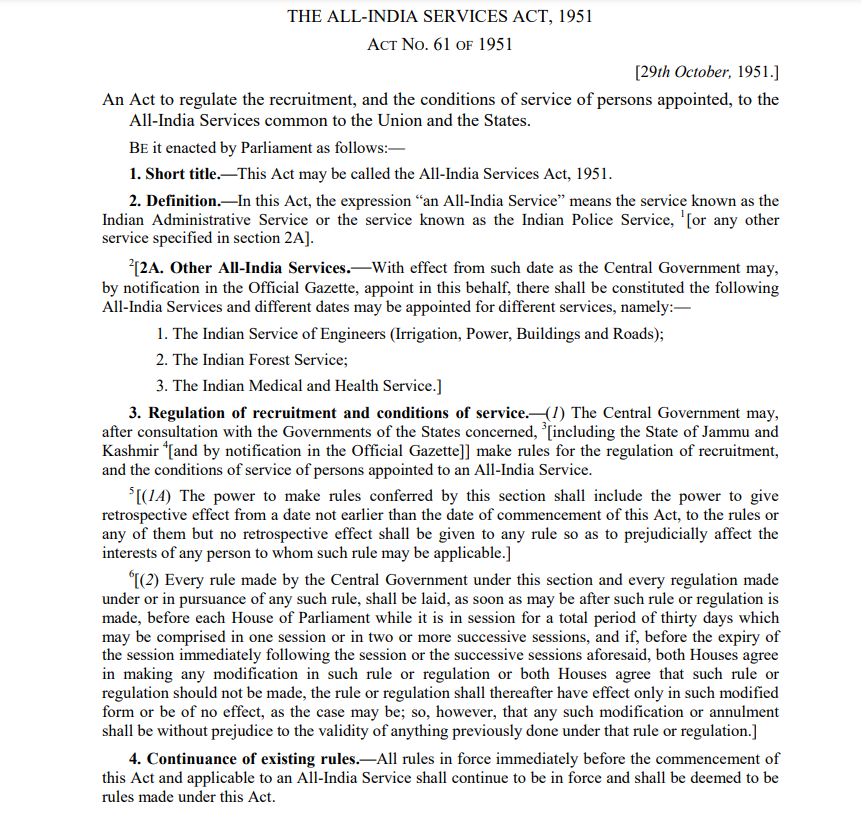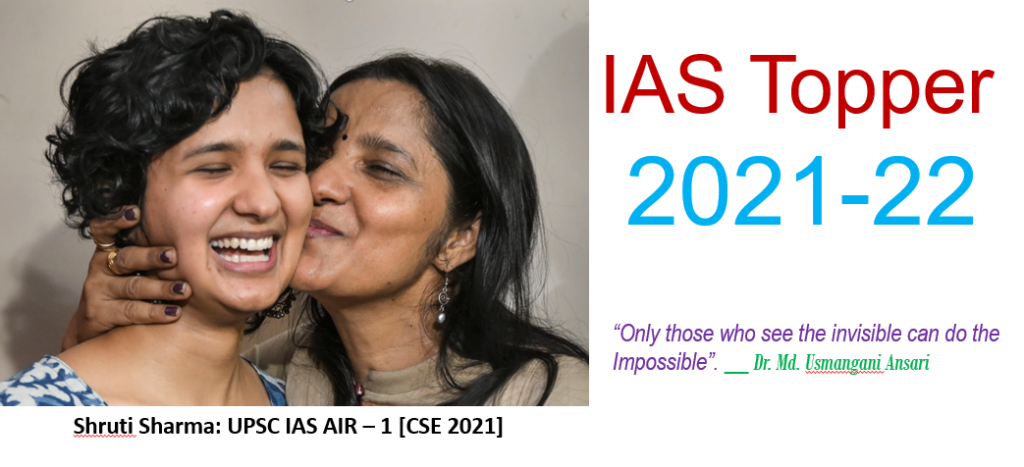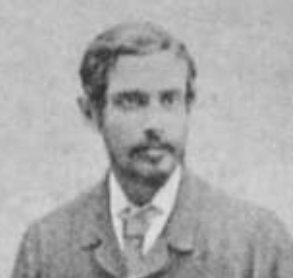IAS Full Form: Indian Administrative Services is the full form of IAS. It is one of the most prestigious services of Government of India. Union Public Service Commission (UPSC) conducts exams every year for the recruitment of IAS, IFS, IPS and groups A/B to fill up the vacancies in Central Government through civil services exams. IAS is one of the most prestigious services in India. Most UPSC aspirants give the IAS cadre as their first preference in the CSE application form due to its power and prestige in Indian bureaucracy and society. In this article, we have explored the history, status, salary, functions, career opportunities, IAS exam pattern, etc. including IAS full form below.
Table of Contents

IAS Full Form: Full Form of UPSC, IFS, IPS, and IRS
IAS full form in English is Indian Administrative Service and IAS full form in Hindi is भारतीय प्रशासनिक सेवा. The UPSC full form is the Union Public Service Commission. IFS full form is Indian Foreign Service, IPS full form is Indian Police Service, and IRS full form is Indian Revenue Service. You have known about the IAS full form, let’s know full form of other Central government services below.
IAS Full Form: Indian Administrative Service
Acronym/Abbreviation | Full Form |
IAS full form | Indian Administrative Service |
Union Public Service Commission | |
IFS full form | Indian Foreign Service |
IPS full form | Indian Police Service |
IRS full form | Indian Revenue Service |
IAS Full Form: Work Portfolios of IAS Officer
Now you have known the IAS full form. Let’s know what are works assigned to the IAS officers during their service tenure. The IAS officer work portfolios cover his journey of first appointment in a district as sub-divisional magistrate (SDM) to state secretariat and Central Secretariat on different posts in various departments and ministries. As the IAS full form is Indian Administrative Service, he does administrative work in the district and other organizations too.
An IAS officer becomes SDM, ADM, DM, and Divisional Commissioner in a district/division of a state. An IAS officer starts his journey in a state secretariat as a Undersecretary, Deputy Secretary, Joint Secretary, Special Secretary-cum-director, Secretary-cum-commissioner, Principal Secretary, Additional Secretary to Chief Secretary in the state. An IAS officer works on different posts in the Central Secretariat such as Assistant Shaveecretary, Undersecretary, Deputy Secretary, Director, Joint Secretary, Additional Secretary, Secretary, and Cabinet Secretary of India. After IAS full form and the work portfolio, next we will discuss the history of IAS.
IAS Full Form: History of IAS
After IAS full form, most of the candidates ask about its history. The history of IAS goes to the East India Company. The civil services of the Company period were classified into 3 groups – covenanted, uncovenanted, and special civil services. The Covenanted service was also called Honorable East India Company’s Civil Service (HEICCS). It comprised the senior civil servants in the government from British nationals. The Uncovenanted category of civil services was for the entry of Indians on the lower side of administration.
The Special Civil Service comprised a specialised nature of services like forest service, Imperial Police and Political Service. After 1893 an annual exam was conducted to recruit the officers in Imperial Police service. However in 1858 the Indian Civil Service (ICS) or say Imperial Civil Services came into being that replaced the HEICCS of East India Company. The Government of India Act 1919 split Indian Civil Service into two categories – All India Services and Central Services. The last appointment to the ICS posts was in 1942. The Central Cabinet constituted Indian Administrative Service (IAS) in 1946.
IAS is a Part of All India Services
The All India Services Act, 1951 created Indian Administrative Service (IAS) and Indian Police Service (IPS) as All India Services under Art. 312 (2) in Indian Constitution Part XIV. The Act also provided the provision for creating 3 more All India Services:
- The Indian Service of Engineers
- The Indian Forest Service
- The Indian Medical and Health Service
Only the Indian Forest Service (IFS) out of these 3 was created in 1966 under All India Services Act- 151. You knew here the IAS full form, its history, let’s move to how an IAS officer is appointed in the next topic.
Direct link for All India Services Act, 1951: Click here

What is Full Form of IAS: Appointment of IAS
You have been aware about the IAS full form, workfolio, and history, now let’s know appointment of IAS. There are 3 modes of IAS recruitment process for the appointment of an officer into the Indian Administrative Service. The first is direct recruitment through the Civil Services Examination (CSE) every year conducted by the Union Public Service Commission (UPSC). The second mode is appointment of IAS officers by promotion from among the civil servants recruited by state public service commission. These state civil servants are promoted to IAS by the Central Government in consultation with the State Governments and the UPSC under the Indian Administrative Service (Appointment by Promotion) Regulations – 1955.
The ratio of IAS officers appointed by direct recruitment and by promotion from states is generally 2:1. Sometimes IAS officers are also appointed from non-state civil service called lateral entry but rarely. All IAS officers are appointed by the President of India irrespective of mode of recruitment.
IAS Direct Recruitment: CSE for Different Civil Service Profiles
The Union Public Service Commission conducts Civil Services Exams (CSE) for different posts and service profiles including IAS every year. This direct recruitment is conducted every year to fill up the vacancies in the departments of different Union Ministries and shortage of required posts in states. The service profiles include some of the following posts as per demand of different Union Government Ministries.
List of IAS, IFS, IPS and Central Civil Services
Name of Services | Parent Ministry/Organisation |
All India Services (AIS) | |
1. Indian Administrative Service (IAS) | Ministry of Home Affairs |
2. Indian Police Service (IPS) | Ministry of Home Affairs |
3. Indian Forest Service (IFoS)* | Only Prelims with CSE |
Group ‘A’ Central Civil Services | |
4. Indian Foreign Service (IFS) | Ministry of External Affairs |
5. Indian Revenue Service (IRS- IT)), Group A | Ministry of Finance |
6. Indian P&T Accounts & Finance Service, Group ‘A’ | Ministry of Communication and Information Technology |
7. Indian Audit & Accounts Service, Group ‘A’ | Ministry of Office of Comptroller & Auditor General of India |
8. Indian Revenue Service (IRS – Customs & Central Excise), Group ‘A’ | Ministry of Ministry of Finance |
9. Indian Defence Accounts Service, Group ‘A’ | Ministry of Defence |
10. Group ‘A’ of Indian Ordnance Factories Service (IOFS) | Ministry of Defence |
11. Indian Postal Service, Group ‘A’ | Ministry of Communication and Information Technology |
12. Indian Civil Accounts Service (ICAS), Group ‘A’ | Ministry of Finance |
13. Indian Railway Accounts Service (IRAS), Group ‘A’ | Ministry of Railway |
14. Group ‘A’ of Indian Railway Traffic Service (IRTS) | Ministry of Railway |
15. Group ‘A’ of Indian Railway Personnel Service (IRPS) | Ministry of Railway |
16.Posts of Assistant Security Commissioner in Railway Protection Force, Group ‘A’ | Ministry of Railway |
17. Indian Defence Estates Service, Group ‘A’ | Ministry of Defence |
18. Indian Information Service (IIS), (Junior Grade), Group ‘A’ | Ministry of Information Broadcasting |
19. Indian Trade Service (ITS), Group ‘A’ | Ministry of Commerce and Industry |
20. Central Industrial Security Force (CISF) | Ministry of Home Affairs |
21. Indian Corporate Law Service (ICLS), Group ‘A’ | Ministry of Corporate Affairs |
Group ‘B’ Civil Services | |
22. Central Secretariat Service (CSS), Group ‘B’ | – |
23. Group ‘B’ of Railway Board Secretariat Service (RBSS) | Ministry of Railway |
24. Armed Forces Headquarters Civil Service, Group ‘B’ | Ministry of Defence |
25. Customs Appraisers Service (CAS), Group ‘B’ | Ministry of Finance |
26. Delhi, Andaman & Nicobar Islands, Lakshadweep, D D & NH Civil Service (DANICS), Group ‘B’ | Ministry of Home Affairs |
27. Delhi, Andaman & Nicobar Islands, Lakshadweep, D D & NH Police Service (DANIPS), Group ‘B’ | Ministry of of Home Affairs |
28. Pondicherry Civil Service (PONDICS), Group ‘B’ | Ministry of of Home Affairs |
29. Pondicherry Police Service (PONDIPS), Group ‘B’ | Ministry of of Home Affairs |
*Note: UPSC conducts prelims exam of Indian Forest Service (IFoS) with Indian Civil Services exam and IFoS mains exam is conducted separately by UPSC.
IAS Full Form: IAS officer Salary and Perks
The IAS salary and perks are the most attractive factors after the status and power of an IAS officer for which UPSC aspirants choose this service as their career. The Government of India has revised the salary of Indian Civil Servants including Indian Administrative Service (IAS full form) officers on the basis of the 7th Pay Commission’s recommendation. As per this Commission recommendation the Government has introduced Consolidated Pay Level after serving some years in service. Let’s know the salary of an IAS officer and basic pay at a specific pay level as given in the table below in reverse order.
Salary of IAS officer
No. of Years required in Service | Pay Level | Basic Pay (INR) | Post/Designation as per working place/year | ||
District Administration | State Secretariat | Central Secretariat | |||
37+ years (last appointment) | 18 | 2,50,000 (Consolidated) | No Equivalent Rank | No Equivalent Rank | Cabinet Secretary |
34–36 (8th appointment) | 17 | 2,25,000 | No Equivalent Rank | Chief Secretary | Secretary |
30–33 (7th appointment) | 16 | 2,05,400 | No Equivalent Rank | Additional Chief Secretary | No Equivalent Rank |
25–30 (6th appointment) | 15 | 1,82,200 | Divisional Commissioner (DC) | Principal Secretary | Additional Secretary |
16–24 (5th appointment) | 14 | 1,44,200 | Divisional Commissioner (DC) | Secretary-cum-Commissioner | Joint Secretary |
13–16 (4th appointment) | 13 | 1,18,500 | District Magistrate (DM) | Special Secretary-cum-Director | Director |
09–12 (3rd appointment) | 12 | 78,800 | District Magistrate (DM) | Joint Secretary | Deputy Secretary |
05–08 (2nd appointment) | 11 | 67,700 | Additional District Magistrate (ADM) | Deputy Secretary | Under Secretary |
01–04 (1st appointment) | 10 | 56100 | Sub-divisional Magistrate (SDM) | Under Secretary | Assistant Secretary |
What are the functions of an IAS officer?
There are different work and functions an IAS (Indian Administrative Service) officer has to perform at different posts during his or her tenure of service. An IAS officer is generally responsible for the maintenance of law and order in the district as District Magistrate (DM) or Collector. In state or Central secretariat he or she works on policy formulation of government to govern the country as a welfare state. The main functions of an IAS officer are broadly given below.
- Maintenance of law and order.
- Collection of revenue and function as Court in revenue matters in sub-division and district.
- He/she also functions as Executive Magistrate.
- He/she functions as Chief Development Officer (CDO) or District Development Officer (DDO).
- Supervise the implementation of state and Central Government policies.
- Visit the places to enquire about implementation of government policies.
- Supervise the expenditure of public funds according to financial propriety norms.
- Contribute in policy formulation and decision making in the secretariat working as Deputy Secretary, Joint Secretary, etc. another level.
- Handle the daily government affairs, including framing and implementation of policy in consultation with the minister-in-charge of the concerned Ministry.
We have discussed about IAS full form, appointment of IAS, salary, and functions of IAS, let’s know the eligibility for IAS exam below.
IAS Exam Eligibility: Nationality, Age, Education, Attempts
The UPSC aspirants preparing for Civil Services first should know the eligibility of IAS exam. They must know the IAS exam eligibility criteria before applying for IAS prelims exam, the first stage of UPSC Civil Services recruitment process. The UPSC IAS exam eligibility conditions consist of the followings:
- Candidates must be a citizen of India.
- He/she must have attained the minimum age of 21 years and must not have attained the age of 32 years on 1st of August of appearing year in the exam except for relaxation for some categories.
- He/she must hold a Graduate degree from a Central or state University or institution or deemed University considered under UGC Act, 1956.
- Candidates are permitted 6 attempts to appear in the Civil Services exam with relaxation in attempts to the SC/ST/OBC and PwBD categories candidates.
IAS Toppers 2022-23
Ishita Kishore emerged as the 2022-23 UPSC Topper, clinching the highest rank in the Civil Services examination. Notably, the top four positions are secured by female candidates – Garima Lohia, Uma Harathi N, and Smriti Mishra. The candidates will be allotted cadres based on their preferences and the available posts in each service, as indicated in the UPSC Topper 2022 list. The Commission has recommended 1022 candidates for appointment across various posts, considering their respective categories.
How to become IAS officer?: UPSC IAS exam pattern

Aspirants who are eligible to appear for IAS exam should know the exam pattern of IAS before starting preparation. The IAS exam pattern is based on UPSC Civil Services recruitment process following prelims and mains exams. The first stage of CSE is prelims test based objective type of questions for the selection of candidates for the mains (written) exams. The CSE mains exam consists of Written and Interview.
The candidates who secure the appropriate marks in mains exams are called for the personality test or interview. The marks of mains and interview together decide the result for final selection in the UPSC Civil Services IAS exam. Thus, the candidates who get selected in the final result of CSE can become an IAS officer.
Read UPSC IAS related other article: UPSC IAS Exam Dates 2022
Important Articles
FAQs Related to IAS Full Form
Q. What is IAS full form?
Ans. The IAS Full form is Indian Civil Service.
Q. What is IAS full form in Hindi?
Ans. The IAS full form in Hindi is भारतीय प्रशासनिक सेवा
Q. What are the powers of an IAS officer?
Ans. An Indian Administrative Service officer may be part of the state cadre or even on central deputation. At the state level, the district administrative machinery is under the control of an IAS officer in the initial years of his career. With time and good performance, IAS officers can represent India abroad, head PSUs and become cabinet secretaries.
Q. What is full form of IPS?
Ans. IPS full form is Indian Police Service.
Q. What is full form of IFS?
Ans. Full form IFS is Indian Foreign Service.
Q. What is IRS full form?
Ans. IRS full form is Indian Revenue Service.
Q. Who is called an IAS officer?
Ans. The IAS officer is one of the three arms of the All India Services and other two are Indian Police Service (IPS) and the Indian Forest Service (IFoS).
Q. What is IAS salary?
Ans. The basic salary at entry level is Rs 56,100 per month as the 7th Pay Commission. It rises to Rs 250000 per month consolidated at the highest level when appointed as Cabinet Secretary at Central Secretariat.
Q. Who is called father of Indian Civil Services?
Ans. Lord Charles Cornwallis (1786 – 1793) is called the father of India Civil Service as he reformed, rationalised, and modernised the civil services in India.
Q. Who is IAS topper 2022-23?
Ans. Ishita Kishore is the IAS topper 2022.
Q. Who laid down the foundation of Civil Services in India?
Ans. Lord Warren Hastings (1773 –1785) laid down the foundation of Civil Services in India.
Q. Who was the first Indian ICS/IAS?
Ans. The civil service pre 1947 was called Indian Civil Service (ICS) and Shri Satyendranath Tagore (June 1, 1842 –January 9, 1923) was the first Indian who became ICS officer in 1864. He was the brother of Shri Rabindaranath Tagore.

FAQs Based on IAS Full Form
Q. Who was the first lady IAS officer in India?
Ans. Anna Rajam Malhotra (July 17, 1927 – Sept. 17, 2018) was the first lady IAS officer in India. She was of the 1951 IAS batch who married R.N. Malhotra of her batchmate.
Q. When was the concept of a merit based modern Civil Service in India introduced?
Ans. A merit based modern Civil Service was introduced in India in 1854 based on Lord Macaulay’s Report.
Q. When was the Indian Civil Service exam held for the first time in India?
Ans. The Indian Civil Service exam was held for the first time in 1922 in India first in Allahabad and later in Delhi with the establishment of the Federal Public Service Commission. However, the ICS exam was continued in London and conducted by the Civil Service Commission.
Q. What is qualification for IAS exam?
Ans. A candidate preparing for UPSC IAS exam should have the following qualification, for example – he/she must be a citizen of India, hold a graduate degree from a recognised university. He/she must not be less than 21 years and more than 32 years of age except belonging to some reserved categories.
Q. Who is called IAS officer?
Ans. An Indian citizen who qualified the Indian Civil Exam finally conducted by UPSC and ranked in IAS merit list.
Frequently Asked Questions on IAS Full Form
Q. What is lowest post in IAS?
Ans. The lowest post of the IAS officer is given during the training period as the IAS trainee or IAS probationer.
Q. Which post is on the top for IAS officer?
Ans. The IAS top post in the Indian Administrative Services is the Cabinet Secretary. The Senior most IAS officer in the Central Secretariat is appointed as Cabinet Secretary, considered as the senior most civil servant of India’s government.
Q. How many attempts are there in IAS exam?
Ans. There are different numbers of attempts given for different categories of candidates in the IAS exam, such as for General Category 6 attempts till 32 years of age. The number of attempts for OBC candidates are 9 till 35 years of age. There are unlimited attempts for SC/ST candidates till 37 years of age.
Q. What is ACP full form?
Ans. The ACP full form is Assistant Commissioner of Police.
Q. What is full form of DSP?
Ans. The DCP full form is Deputy superintendent of police.
Q. What is IAS uniform?
Ans. There is no special uniform for IAS officers. They can wear any formal clothes either in the office or at official events. However, IPS officers have to wear their prescribed uniform as per their rank and must put the Ashok symbol on their shoulders.
Q. Which is bigger IAS or IPS?
Ans. An IAS officer holds the highest rank, followed by an IPS officer in the second position. Additionally, IAS officers generally enjoy more privileges compared to IPS officers.


This Post Has One Comment
Pingback: What Is Difference Between Citizenship And Nationality? - Copy — Competitive Career Exams